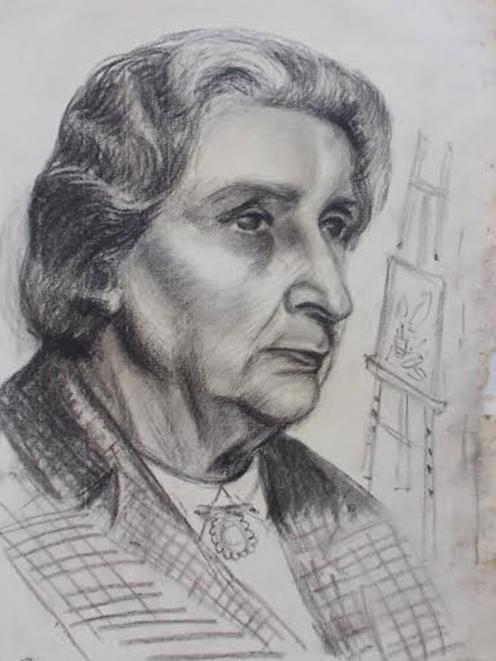A dusty cache of rare paintings by one of New Zealand's greatest artists has been found in an English attic, nearly 70 years after her death.
The collection of 13 works by Frances Hodgkins has now been brought to New Zealand and is being exhibited in her hometown of Dunedin.
The "bunch of tatty old pictures'' were found in a mouldy cardboard folder during a clearance of a house in Weymouth, Dorset by a local second-hand dealer.

Waiheke Island art collector Andy Boston paid "a reasonable amount... several thousand dollars'' for the collection, which includes three signed, never-before-seen self-portraits.
The works in The Hidden Portfolio are thought to date from approximately 1931-40 and give an insight into the private world of one of the most influential artists of the British Modernist era.
"They are very powerful, high quality pictures,'' Mr Boston said.
The collection also has three textile designs, an oil painting of close friend Dorothy Selby, oil sketches, three watercolours including one of her good friend Cedric Morris, an English modernist painter, and a chalk sketch of Morris' famed iris garden
Mr Boston has undergone a lengthy task to get the works authenticated.
Two handwriting experts have reviewed the artist's signatures, and they have also undergone forensic fingerprint testing.
Mr Boston said he had encountered much "negativity'' and scorn by the New Zealand art establishment, including from Hodgkins experts and dealers who question their authenticity.
But after two years of research and cross-examination, he's adamant that the works are legitimate.
"Most people have this idea that she either did her early impressionistic watercolours or her later modernist, gaudy oils,'' he said.
"A lot of people don't realise that she was constantly experimenting right throughout her life, she was very self critical, and she destroyed huge amounts of her work.
"Hodgkins was never believed to have done any self-portraits which is what makes this collection so hard to believe for many people.''
After initially buying the collection with the intention to sell it on, Mr Boston said the works have come to mean a lot to him.
A two-week exhibition at the Otago Art Society ends on March 19, and Mr Boston wants as many people as possible to see the artworks.
"The reason I bring things home is that I love New Zealand as a culture and believe that anything you can do to make our culture stronger, especially in this day and age as it's getting rapidly diluted, is a good thing,'' he said.
"A lot of what I have been up against is because it does destroy a lot of the commonly held misconceptions of what Frances was and what she did.''
Two rare Hodgkins oil paintings, found at a small New England auction house, sold for a combined $464,125 at Mossgreen-Webb's Important Paintings and Contemporary Art auction in Auckland last year.
Born in Dunedin in 1869, Hodgkins was already an accomplished watercolourist by the time she travelled to England in 1901. The next 46 years were spent painting in Britain and Europe apart from a visit home to New Zealand at the end of 1903.
Constantly experimenting and changing styles and mediums, Hodgkins was her own harshest critic. She destroyed many pieces of her own work that she considered not good enough or unworthy of exhibition or sale.
She battled poverty, poor physical and mental health and acceptance, predominantly as a serious female artist, and it wasn't until the 1920s that her talent began to be widely recognised.
In her last decade she produced some of her most critically-acclaimed work, culminating in her selection as Britain's representative at the ill-fated Venice Biennale of 1940, which was cancelled due to World War 2 hostilities.
- By Kurt Bayer of the NZ Herald

















